52 Weeks of Historical How-To’s, Week 26: Brewing Scurvy Grass Ale!

This week’s How-to post gave an excuse for our two departmental home-brewers, Marc and Daryl, to stretch their boundaries to adapt a strange recipe for “Scurvy-grass Ale” found in an early 19th century book from our collections. St Andrews has a number of tracts from the London brewing trade from the 19th century, as well as other earlier works on cultivating hops and wine. Unfortunately, almost all of the 19th century tracts in our collections are largely treatises on how to keep a brewery, how to measure specific gravity (or alcohol content) of various beverages or the taxation schedules of various drinks.

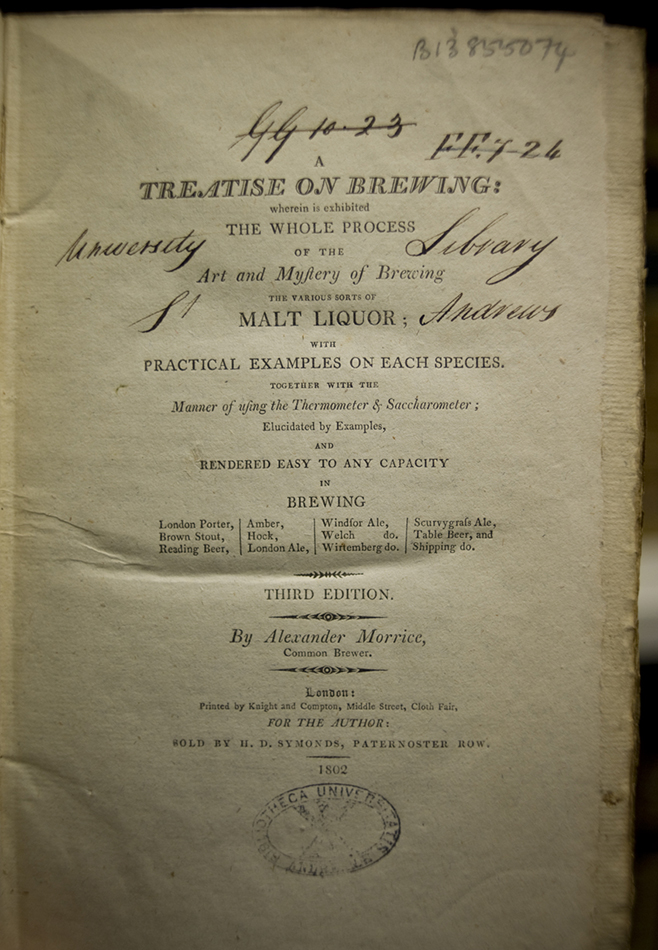
Fortunately, we came across a third edition of Alexander Morrice’s A treatise on brewing from 1802 which includes several recipes for porters, ales and table beers. Morrice’s treatise was very popular: it was first published in 1801 and stayed in publication until 1834 when the 8th and final edition was printed. This is understandable since Morrice combines much of what is discussed in other treatises of the time (discussion of equipment, proper keeping of a brewery, proper storage, etc.) with recipes for almost a dozen beers that were in regular circulation in England during the Napoleonic Wars. Morrice opens up his treatise with a wonderful, witty apology:
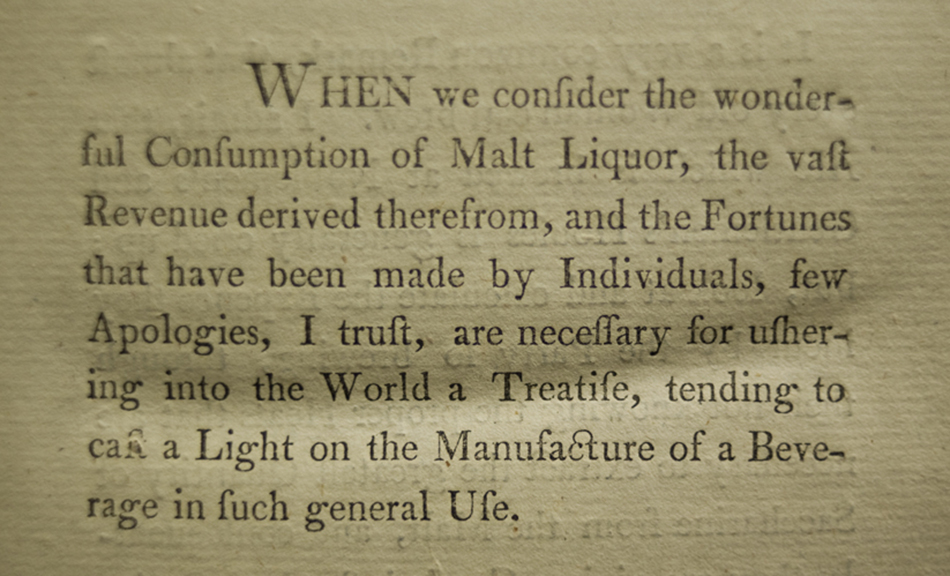
Morrice’s treatise is littered with little gems that give us a peek into the London brewing trade at the turn of the 19th century which still ring true today, such as: “I am convinced that the many raw, thin, pale beers, which are in such frequent vend, whereby the brewery is injured, and the public not benefitted, principally proceed from the liquors being improperly taken…”; and ““Fermentation is, then, the grand field where the experienced brewer is to reap the golden harvest of his labours… here is the most delicate part of the process, as every error in this stage must be a diminution of the brewer’s profits.”
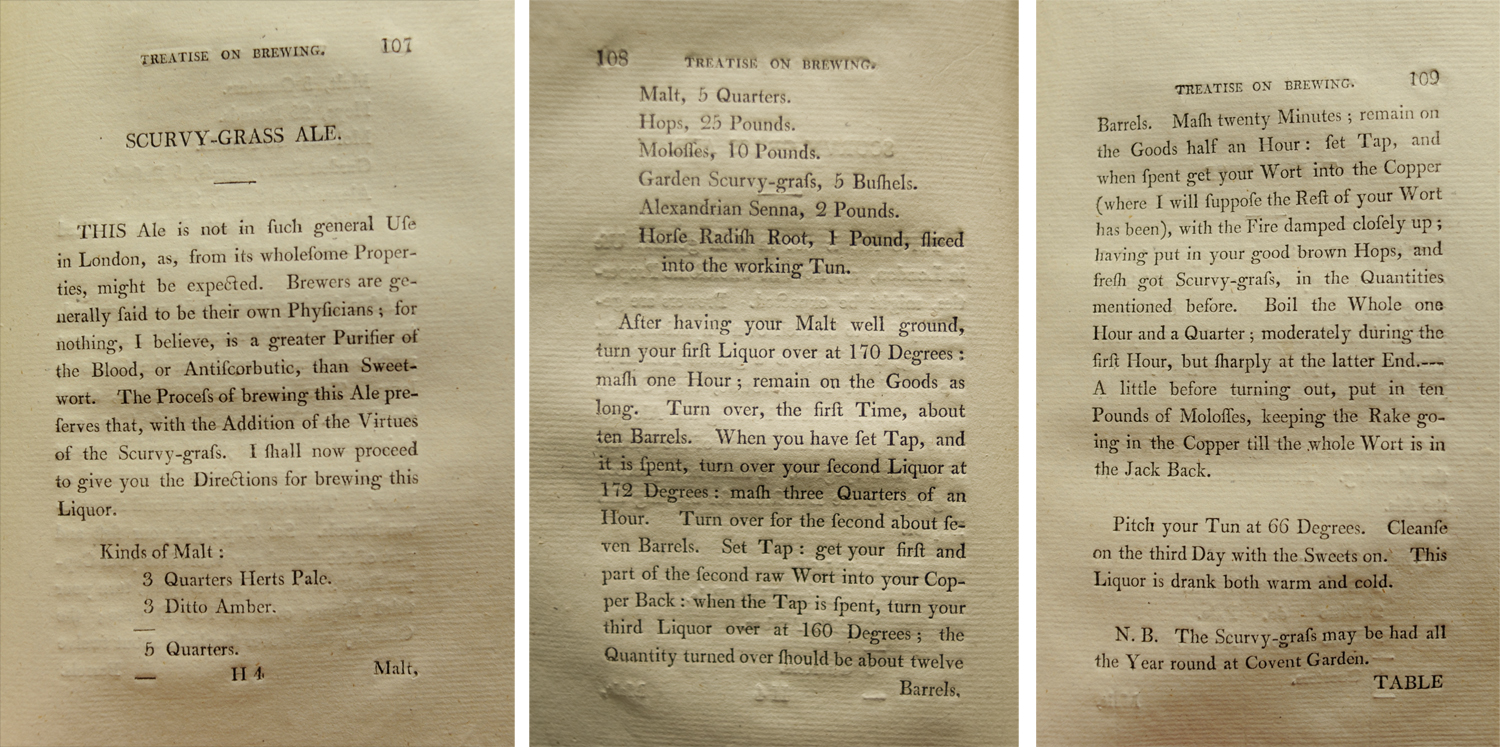
When we come to the curious recipe for Scurvy-grass Ale, he doesn’t hesitate to take another shot at the beers being produced regularly in London:
THIS Ale is not in such general Use in London, as, from its wholesome Properties, might be expected.
– Alexander Morrice in A treatise on brewing.
As you can see from the recipe above, these recipes were intended for large-scale production from raw ingredients. We knew from the outset that we would be doing our best to do an adaptation, a new arrangement, of this 200 year-old recipe; as home-brewers we were able to fall back on basic principles of brewing ales which continue to stand the test of time and be regularly applied the world over. Brewing isn’t rocket science. In short, it involves making a sweet wort by boiling malted barley or other grains, adding hops to the boil to increase bitterness and aroma and to crucially act as a preservative, adding an active yeast to the wort after it has cooled, and then letting it ferment! We first needed to decipher some of the key ingredients and find a source for them. The malt profile was easy enough to match up to malts available on the modern home-brewing market (“pale” and “amber” malts refer to the type of barley and how long it has been roasted for); however, the only clue to the hop varieties was in the recipe using “good brown hops”. We decided to only use two of the four other strange ingredients for this ale as well (scurvy-grass and senna), as we felt the horseradish seemed a bit too left-field for a modern interpretation and the molasses wasn’t in keeping with producing a lighter beer more suitable for fine spring weather (we were making 40 pints of this stuff, it had to be drinkable!).
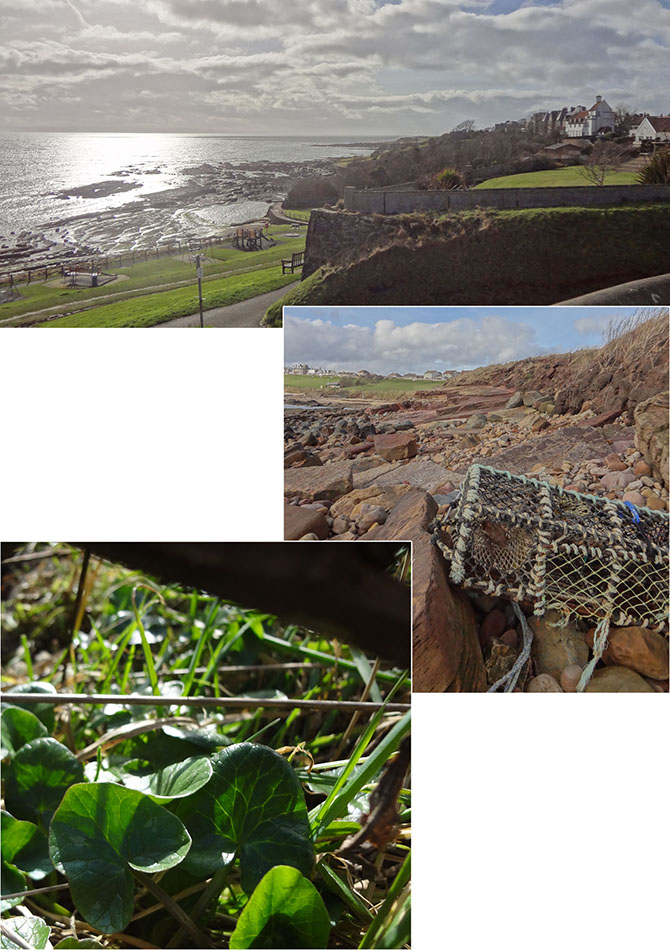
So, first task: source Scurvy-grass and Alexandrian senna. Senna pods are pretty easy to come by, they can be found in most herbal remedy stores as a natural laxative (usually in the form of one cup of tea). We did proceed with caution, however, as we were warned about reports of Senna-related deaths and had no wish to inflict any harm on ourselves or our brave taste-testers! Scurvy-grass, however, was a bit more difficult to find; it’s not something that is sold as an herb or decorative plant. After a few weeks of scouring the web, I decided to get in touch with the Royal Botanical Gardens in Edinburgh and Dr Heather McHaffie gave the following advice: “The scurvy-grass grows around the coast and is fairly common so you can collect your own … recent records at Elie, also more general ones near Crail and Fife Ness … you would probably look for it at the top of the shore, it has rounded fleshy leaves 2-3 cm across with a peppery taste.” And so a-foraging we went! I spotted what we were after only a few minutes on the Fife Coastal Path, just east of Crail, and so this beer took on a much more Scottish nature.
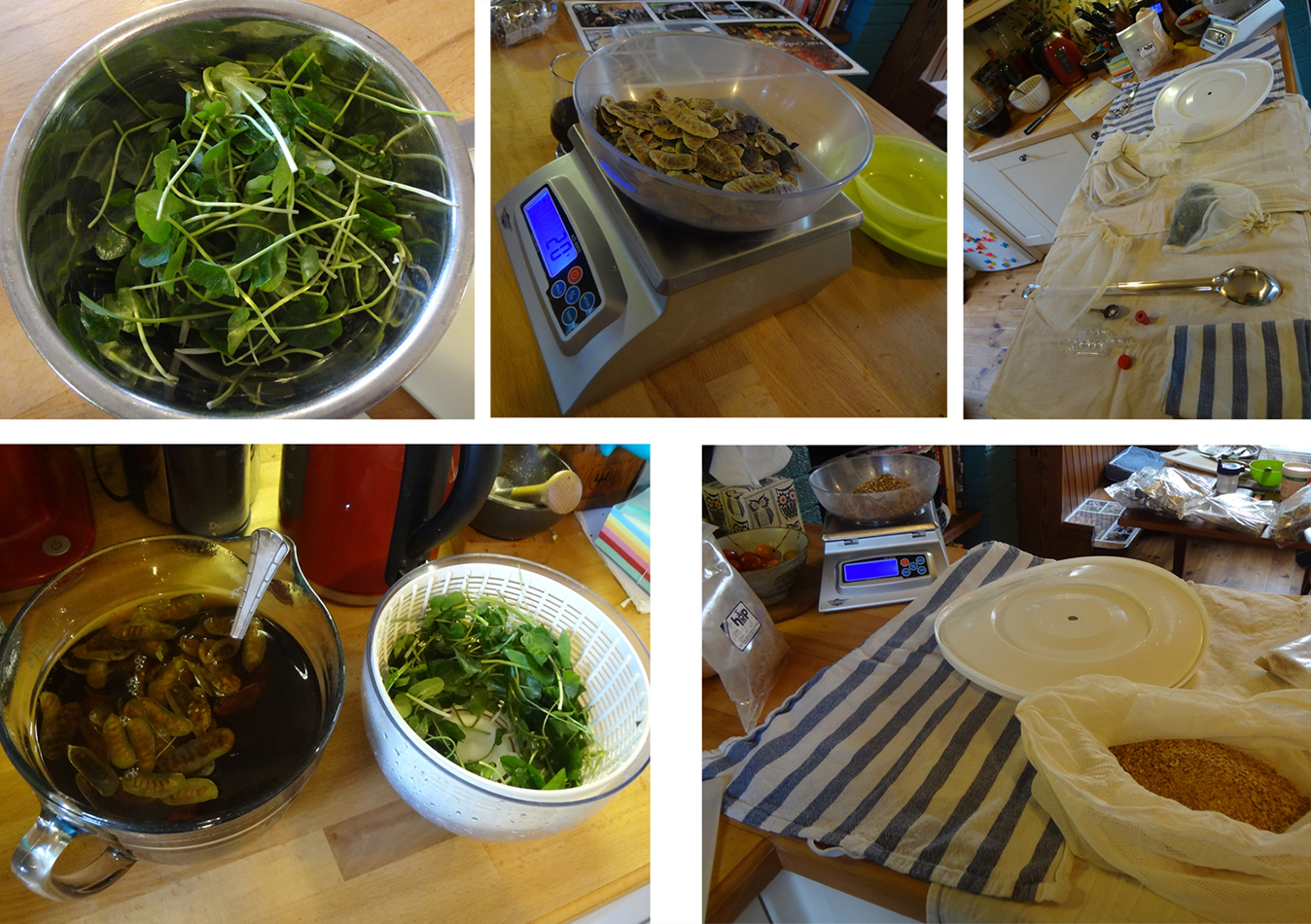
This all makes sense, as scurvy-grass derives its name from its extensive use by sailing populations as a remedy and protection from scurvy. It is rich in vitamin C and grows in craggy, salty environments, which is to say that the east coast of Fife is a perfect place to look for it! We harvested a good bunch the herb and then finally got to brewing.
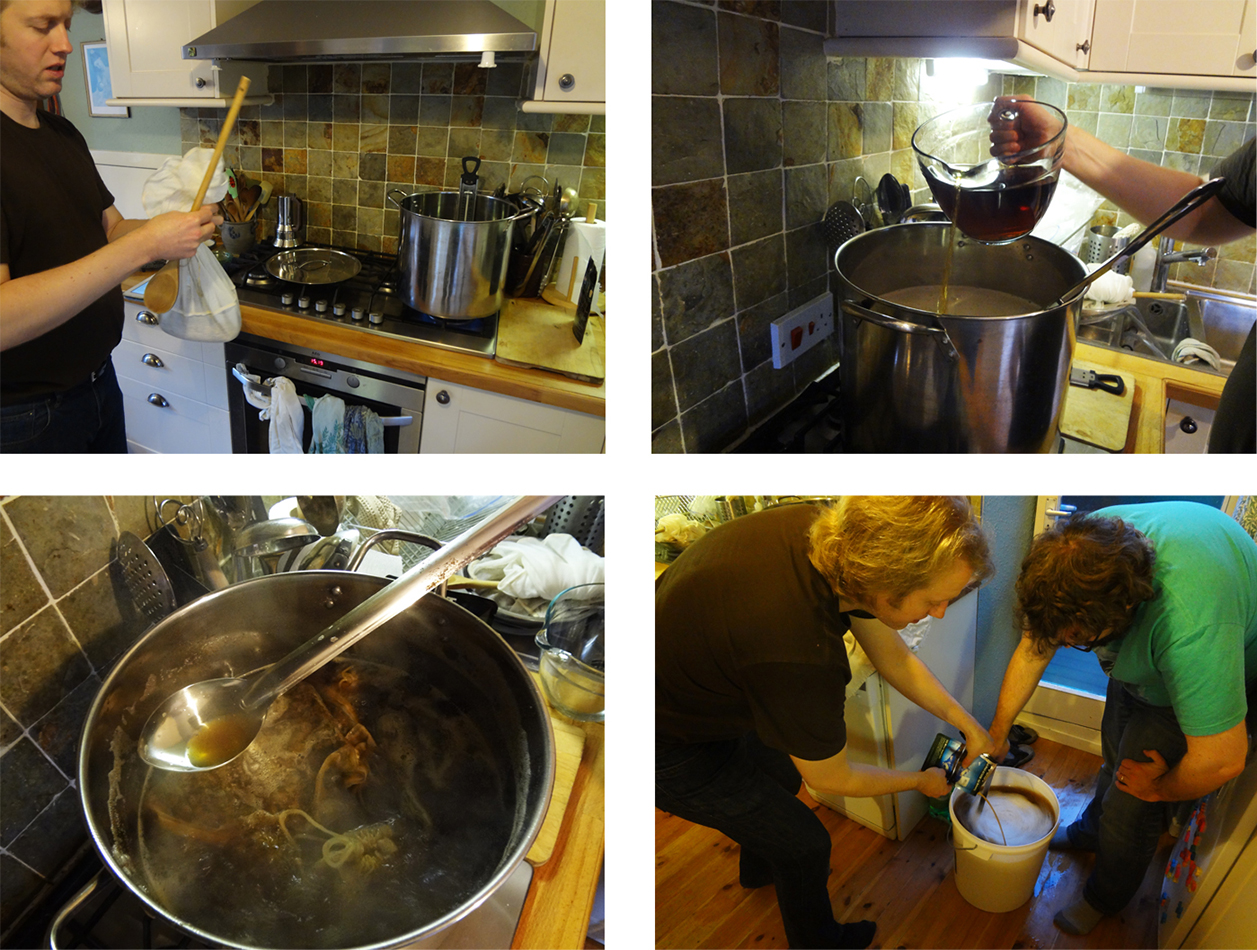
For this experiment our aim was to brew 5 gallons (23 litres) of ale. This is what we did:
- To begin, we cheated a little by sourcing what is known as a brewing “extract” which is a concentrated base wort (just add water!) from which we could then brew our beer. Otherwise, to boil all the required grains from scratch can be quite time consuming and necessitate a GIANT pot and gas burner.
N.B. It’s important to use a good water source, ideally free of chlorine and other impurities as these can affect the flavour.
- Although we used concentrated wort extract as the base for our brewing, home brewers have found that brewing straight from extract can produce a beer which is a bit dull. As such, to introduce more fresh grain flavours into our beer we employed a process which is in between “all grain” brewing and “extract” brewing known as steeping. This involves steeping a proportionally small selection of malted and roasted grains in your extract based wort (using a big cloth bag like a giant tea bag) to impart sugars and characteristics which will improve the flavour profile and mouth feel (heavy, thick, clean, light, creamy) of the finished product.
The final wort had the following grain profile:
- 85% Light Malt Extract
- 5% Biscuit Malt
- 5% Abbey Malt
- 5% Caramel Red Malt (carared)
- Boiled our hops in the wort for 30 minutes.
- We used two kinds of relatively neutral traditional bittering hops in an attempt to replicate what the ale would have been like in the 1800s. There was no late-hopping or dry-hopping.
- The adjuncts we added are what distinguish this beer as a curative for scurvy and its symptoms.
- 45 grams of fresh Scurvy grass (Rich in Vitamin C with a peppery bitter flavour)
- 20 grams of Senna pods infused in 1.5 litres of boiling water for 15 minutes to make a tea which was added to the wort. (N.B. We only used half of the tea for fear of too much laxative effect!)
- Lastly we added yeast which was typical of Northern England (Yorkshire) in an attempt to once again stay true to the historic roots of this brew.
The primary fermentation in a large sterile bucket lasted for about two weeks, at which point the beer was bottled and laid down to carbonate, rest and develop its flavours for a month.
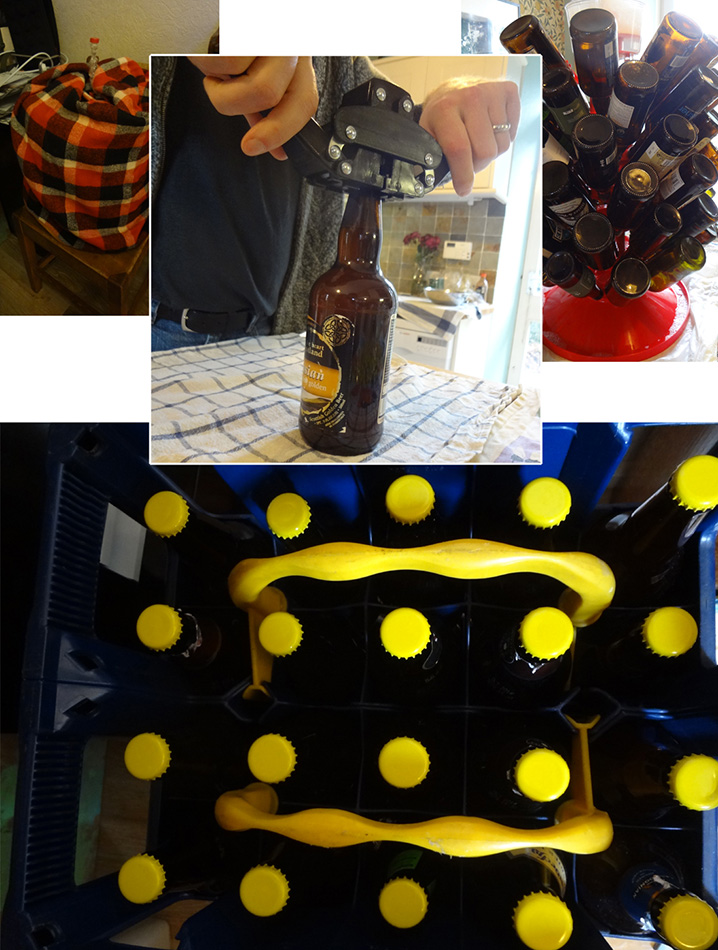
Finally, last Thursday we cracked open the first of the Scurvy-grass Ales (well, that’s a lie, we had to get in a sneaky taste the night before to make sure we weren’t going to kill our colleagues). The resulting ale pours a nice gold-red colour; it is mostly clear and is lightly carbonated, producing very little head. It’s sweet on first taste, but it is most certainly a bitter brew.

Here are some of the reactions from our taste-testers:
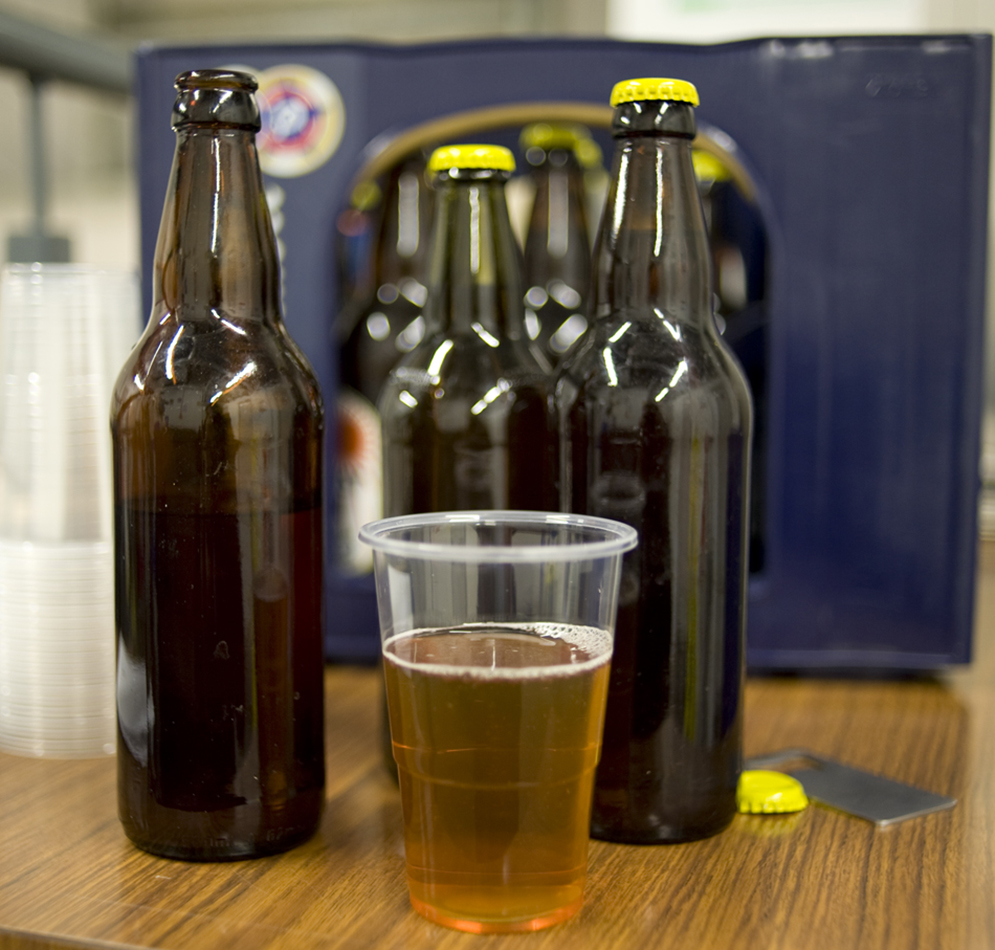
Smells amazing, quite sweet, very palatable with a kick that wakes you up! – Kirsty
Quite sweet, pretty light for its colour (a good thing!) and dangerously easy to drink! – Rob
Excellent. A slight hint of manuscript, with a nose of incunabulum – Norman [the authors of this blog post would like to comment here that no old books or manuscripts were harmed in the making of this beer]
And, finally, from Doug, one of our beer enthusiasts on staff:
A medium ale profile, but with a pronounced sweetness, and a light peppery finish. A very enjoyable drink, even if I’m not totally sure where the scurvy-grass fits in! – Doug

As of today, we haven’t heard of any adverse effects on our colleagues, and everyone showed up to work on Friday, so we can pretty safely say that this recipe is fine to recreate. This ale was pretty straight-forward, and one could easily work in the molasses and horseradish if it’s to your taste; last year Dogfish Head Brewery in the States did a small batch of Scurvy-grass Ale with the whole list of ingredients which earned pretty good reviews.
Not bad for a 200-year old ale using mysterious green herbs that grow in the craggy spots of the world. Happy brewing and bottoms up!
–DG & MB
[…] 52 Weeks of Historical How-To’s, Week 26: Brewing Scurvy Grass Ale! […]
[…] following recipes and knitting patterns, recreating photographic processes, crafting and brewing and climbing mountains, taking historical baths and searching the skies for […]
Reblogged this on Inn of Bards Rest and commented: We had at one time set upon the table, Good ale of hyssop, 'twas no Æsop-fable: Then had we ale of sage, and ale of malt, And ale of wormwood, that could make one halt, With ale of rosemary, and betony, And two ales more, or else I needs must lie. But to conclude this drinking aley-tale, We had a sort of ale, called scurvy ale. - The Pennyles Pilgrimage /John Taylor, The Water-Poet 1618